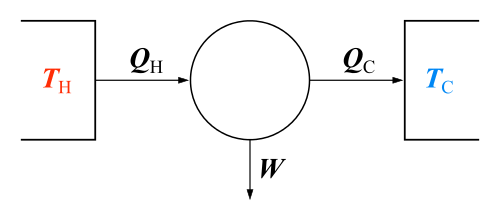Quasistatic process
| Thermodynamics | ||||||||||||
|---|---|---|---|---|---|---|---|---|---|---|---|---|
 The classical Carnot heat engine | ||||||||||||
|
||||||||||||
| Book:Thermodynamics | ||||||||||||
In thermodynamics, a quasi-static process is a thermodynamic process that happens slowly enough for the system to remain in internal equilibrium. An example of this is quasi-static compression, where the volume of a system changes at a slow rate enough to allow the pressure to remain uniform and constant throughout the system.[1]
Any reversible process is necessarily a quasi-static one. However, quasi-static processes involving entropy production are irreversible. An example of a quasi-static process that is not reversible is a compression against a system with a piston subject to friction—although the system is always in thermal equilibrium, the friction ensures the generation of dissipative entropy, which directly goes against the definition of reversible. A notable example of a process that is not even quasi-static is the slow heat exchange between two bodies at two finitely different temperatures, where the heat exchange rate is controlled by an approximately adiabatic partition between the two bodies—in this case, no matter how slowly the process takes place, the states of the two bodies are never infinitesimally close to equilibrium, since thermal equilibrium requires that the two bodies be at the same temperature.
Some ambiguity exists in the literature concerning the distinction between quasi-static and reversible processes, as these are sometimes taken as synonyms. The reason is the theorem that any reversible process is also a quasi-static one, even though (as we have illustrated above) the converse is not true. In practical situations, it is essential to differentiate between the two: any engineer would remember to include friction when calculating the dissipative entropy generation, so there are no reversible processes in practice. The definition given above is closer to the intuitive understanding of the word “quasi-” (almost) “static”, and remains technically different from reversible processes.
PV-Work in various quasi-static processes
- Constant pressure: Isobaric processes,
- Constant volume: Isochoric processes,
- Constant temperature: Isothermal processes,
- where P varies with V via , so
- Polytropic processes,